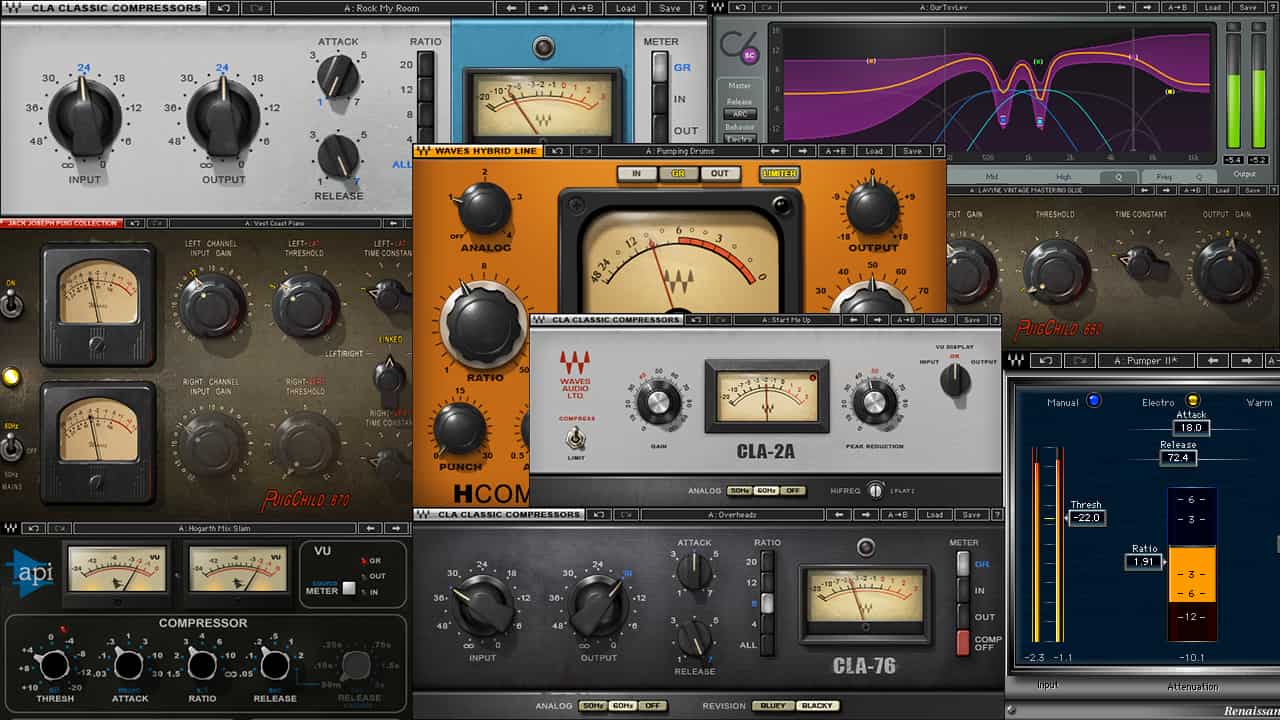Have you ever wonder why your song doesn’t sound professional in comparison to another mainstream artist or music producer? Have you given any thought on when you had added all the essential elements which are necessary to make a song sound better, but still, your song doesn’t sound right in terms of mixing. This is because you’re not mixing your music correctly. There are a plethora of things you could do in your mixer track to make your track perfect but taking one step at a time, In this article, I will guide you how to add Reverb in Fl Studio in a correct way!
What is Reverb?
INSTRUMENT PLUGINS / EFFECT PLUGINS / CHANNEL SETTINGS Plugin Wrapper. The Wrapper is a software interface/layer between instrument / effect plugins and FL Studio. All controls are common to all plugins (FL native & VST), while the plugin options (7) only appear on Wrappers hosting VST format plugins. Click on more plugins, add path to a directory your 3rd party plugin is installed in, press scan, new plugins will be green colored after the scanning is complete, it will be like 'sylenth1 64-bit status OK', put a checkmark on that plugin, exit the window you are in, go and try your plugin now. If you open a project and some, or all, Channel buttons are red or a plugin instrument is replaced with an empty channel (and you are sure it's not a ' trial ' plugin), this means the samples or instruments nominated for those channels can't be found. You will have been shown a pop-up message about missing data when the project was loaded. STEP 11 – Fruity Limiter. Limiter is what you use for maximizing the volume of the whole mix without distortion and Fruity Limiter is pretty good for that. The purpose of a limiter in a mastering situation is to limit the output level to a defined maximum level (usually near to 0.0dB) to avoid clipping when you’re increasing the gain.
Reverb is a natural phenomenon which shows how a sound wave is reacting to the surrounding surfaces. So what it has to do with the mixing of a song? Well, Reverb gives a significant depth to a song. During a mixing, When you have raw sounds, a reverb gives a certain amount of depth to those sounds. With the help of Reverb, you can blend different sounds, which can help you to make your song more “Complete.”
If you need to add any effect in the mixer track, you have to use VST plugins for that. In Fl studio or any other DAW, There are different VSTs for different effects. For Reverb, The most commonly used and the easiest to use the plugin is Fruity Reeverb 2. Fruity Reeverb 2 is a stock plugin created by the Image line itself.
So yeah, It is a free plugin, and it comes with almost every version of FL Studio. Now when you know what Reverb is and why you should use it, let’s discuss how to add Reverb in FL studio.
How to add Reverb in Fl studio
- Open your Mixer channel.
- Select a track where you want to add Reverb
- Click on the slot where you want to add
- Select ‘Fruity Reeverb 2’ (You’ll find it under Delays and Reverbs)
And that’s it. Fruity Reeverb 2 is now added to your track you’ve selected.
Now you can tweak it up and can see how the result is. But Don’t overdo things. It doesn’t make things better, but it undoubtedly decreases the value of your efforts and will make your mix sound muddy.
How to use fruity Reeverb 2?
Now when you have added Reeverb 2 in your mixer track, You have to make sure you’re not overdoing it. Reverb effect, when used in a perfect amount, will make the song sound complete, and all the samples will blend perfectly. Let us get in the plugin itself, and it’s basics so that you can get the full idea of the all the knobs and sliders present in the VST.
When you open the fruity Reeverb 2, The first thing you’ll see that the VST has five different segments. There is a small round cylindrical structure, This is the virtual room. Remember Anything you do is a digital version of how sounds will react in an actual physical room.

So starting with the Rightmost section, There are three sliders; Dry, ER, and Wet. You’ll also find a small knob used for stereo separation.
Let’s dig into all the three sliders. Also, This section is one of the essential sections as Dry and Wet are the two primary components of reverb.
1)Wet (Wet Level)
It signifies the amount of Reverb on the track. Wet sends the relative level of the reverberant signals.
2)ER (Early Reflection)
Early reflection represents the first sign of the Reverb. Don’t worry about it if you’re unable to identify how to use it. It’s not that important for beginners.
3) Dry (dry Levels)
Dry level slider shows the amount of rawness in your sound. For the type of sounds you’re using in your song, The balance of Dry and Wet knob may vary.
In the next section, you’ll find four knobs, namely, Bass, Dec(Decay), Damp(High Damping), and Cross (bass Crossover).
1) Bass
It represents the decay time of bass frequencies. Bass Frequency will change the overall mood of the song!
2) Dec (Decay)
Decay represents the overall decay time of the Reverb. For small rooms use low decay time while for large rooms use longer decay time.
3)Damp (High Damping)
Damping is used to damp the high frequencies. It represents at what rate the higher frequencies decay.
4)Cross (Bass crossover)

Signifies the point below bass frequencies will be boosted by the Bass knob.
We were moving on to the next section, Delay, Size, Mod, and speed.
1) Delay
Delay controls the delay between the input and the first reverberated signal.
Fruity Limiter Download
2)Size
Size shows the size of the virtual room. You can increase the room size with respect to decay size and can get very realistic results.
3)Diff (Diffusion)
Diff shows the reflection of sound bouncing back from the virtual room.
Fruity Limiter Not Found
4) Speed
It is the speed of the modulated sine wave of Reverb.
5)Mod (Modulation)
Mod modulates the Reverb time.
In the next section, You’ll find two knobs, H.cut and L.cut. These both knobs are very crucial to make your Reverb more appealing.
Fruity Limiter Plugin
1)H.cut (High Cut)
As the name suggests, It cuts off the Higher frequencies of the reverb.

2) L.cut (Low cut)
L.cut cuts lower frequencies of the reverb.
With this, you can have extra control over your reverb sound.

The last is the GUI section.
FL studio is famous because of its Graphical Interface. Like every other stock plugins, Fruity Reveerb 2 also has beneficial GUI. You can visually see the virtual room here. If you increase your size toggle, you can see the size of the virtual room will also increase. The makers of the plugin have intelligently used the visuals. If the reverb is high, it’ll show a bright light highting the virtual room. Users can use this to check the amount of reverb they have put on visually.
Conclusion:
The first step towards the mixing of your track is to add reverb. Almost every element, from a drum snare to chords or the main melody, needs reverb to make them sound vibrant. It would help if you always use different reverb on different mixing tracks rather than using a single reverb on the whole master channel. Using separate reverb will give you more control over your reverb sound. I would recommend not to use reverb on bass or 808s because it is not required. If you’ll add reverb on bass, The Bass will lose its own identity.
There are a lot many other VST plugins in the market place but using Fruity reveerb 2 is the best option because it is free readily available. I hope you found this article useful, stay tuned for more such tutorials.
How to get the radio FM broadcast processing ?
You have music that you want to broadcast, you have set up a web radio, and now you need this “FM radio sound” : loud, clear and powerful.
You can set up a chain of effects to try to achieve this FM radio sound : multiband compressor (s), equalizer, enhancer… Or you can try this “all in one” FREE plugin, intended for FM broadcasting :
Smash your sound with ENERGIZE free VST plugin
This very powerful VST plugin is old but nothing compares to it! Let’s have a look in the web archive : energize free plugin
Here’s the signal flow in the plugin :
signal chain processing
As you can see, the signal is separated into 5 bands :
0-70 Hz
70 Hz – 200 Hz
200 Hz – 1KHz
1 KHz – 5 KHz
5 Khz – 15 KHz
each band is processed separately.
You can download the energize II manual here
You can download the VST plugin here
Using Energize VST in Wavosaur to get the FM radio sound
1) launch Wavosaur
2) load the music / podcast / anything else you want to process : menu File -> Open
3) click on the “rack” button to oepn the VST rack, then click on “Load VST” and choose “EnergizeII.dll” –> EnergizeII.dll is in this archive !!!! => here uncompress and copy in your VST folder <–
4) the VST rack should look like this :
The energize plugin has no GUI, so you have to use the VST rack to access the parameters
the parameters are on the right : AGC release, Compressor drive, Slide B2 etc…
I choose to present the 1.37 version because the next versions don’t show the parameters in the VST host. But if you don’t have to tweak and are satisfied with the default preset sound you can download the other versions : energize plugin v 1.4
5) check “processing” in Wavosaur to hear the effect when playing, click apply if you want to process your sound!
Before / After : ready for the FM broadcasting !!
here’s some before / after to show how dramatic is the effect !
Italo-dance ! note how the sound level is raised on “quiet” parts
https://blog.wavosaur.com/wp-content/uploads/2013/10/Master-Of-Progress-Can-You-Feel-It.mp3
https://blog.wavosaur.com/wp-content/uploads/2013/10/Master-Of-Progress-Can-You-Feel-It-big-radio-sound.mp3
biguine bretonne : stereo enhancing is very present
https://blog.wavosaur.com/wp-content/uploads/2013/10/Les-Charlots-La-Biguine-Au-Biniou.mp3
https://blog.wavosaur.com/wp-content/uploads/2013/10/Les-Charlots-La-Biguine-Au-Biniou-big-radio-sound.mp3
Fruity Limiter Dll
new beat / house : back to 1988
https://blog.wavosaur.com/wp-content/uploads/2013/10/Bassline-boys-On-Se-Calme.mp3
https://blog.wavosaur.com/wp-content/uploads/2013/10/Bassline-boys-On-Se-Calme-big-radio-sound.mp3
house : the level of the part without the beat is dramatically raised ! => fm radio broadcast sound
https://blog.wavosaur.com/wp-content/uploads/2013/10/DJ-Creator-Ki-Ki-Ki-ss-Me.mp3
https://blog.wavosaur.com/wp-content/uploads/2013/10/DJ-Creator-Ki-Ki-Ki-ss-Me-big-radio-sound.mp3
FM broadcasting yes ! but mastering…
We could be tempted to use this funky plugin for mastering purpose, but i found the effect a bit too radical. It’s perfect to get this radio broadcasting sound. But if you need to master your sounds, more subtle effects are recommended, more articles will come about compressors and eq !
Nothing prevents you from using the free Energize II VST plugin for creative effects though
Fruity Limiter Plugin Could Not Be Found
Big broadcast sound with Stardust VST plugin
The Fruity Limiter Plugin Could Not Be Found
Stadust VST is a free and incredibly good plugin, it’s intended for mastering, but with extreme settings you can achieve something close to the “big fat FM radio sound”